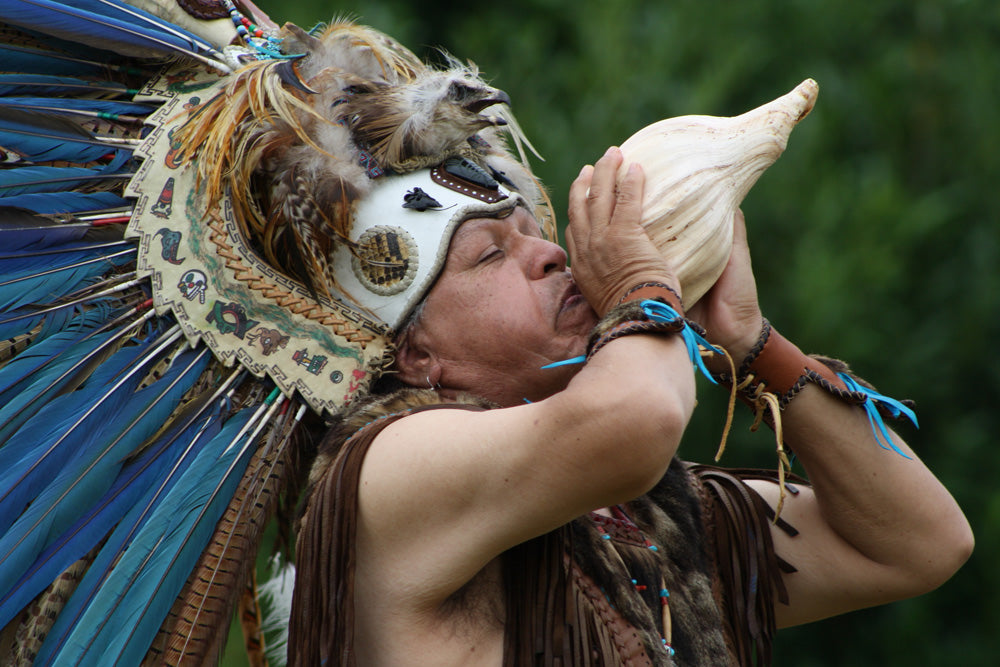Spirit Animals & Shamanism

Neoshamanism refers to "new"' forms of shamanism, or methods of seeking visions or healing. Neoshamanism comprises an eclectic range of beliefs and practices that involve attempts to attain altered states and communicate with a spirit world. Neoshamanic systems may not resemble traditional forms of shamanism. Some have been invented by individual practitioners, though many borrow or gain inspiration from a variety of different indigenous cultures. In particular, indigenous cultures of the Americas have been influential.
The word "shaman" originates from the Evenki word "šamán". The Tungusic term was subsequently adopted by Russians interacting with the indigenous peoples of Siberia, and then applied very broadly by western anthropologists to many, diverse spiritual systems that share some kind of practice of calling upon, and mediating with, spirit beings.
Neoshamanism is not a single, cohesive belief system, but a collective term for many philosophies and activities. However, certain generalities may be drawn between adherents. Most believe in spirits and pursue contact with the "spirit-world" in altered states of consciousness which they achieve through drumming, dance, or the use of entheogens. Most systems might be described as existing somewhere on the animism/pantheism spectrum. Some neoshamans were not trained by any traditional shaman or member of any American indigenous culture, but rather learn independently from books and experimentation. Many attend New Age workshops and retreats, where they study a wide variety of ideas and techniques, both new and old.
Some members of traditional, indigenous cultures and religions are critical of neoshamanism, asserting that it represents an illegitimate form of cultural appropriation, or that it is nothing more than a ruse by fraudulent spiritual leaders to disguise or lend legitimacy fabricated, ignorant and/or unsafe elements in their ceremonies. According to York (2001) one difference between neoshamanism and traditional shamanism is the role of fear. Neoshamanism and its New Age relations tend to dismiss the existence of evil, fear, and failure. "In traditional shamanism, the shaman’s initiation is an ordeal involving pain, hardship and terror. New Age, by contrast is a religious perspective that denies the ultimately reality of the negative, and this would devalue the role of fear as well."
The 2011 United Kingdom census made it possible to write in a description of one's own choosing for "Religion". The figures for England and Wales show that from just over 80,000 people self-identifying as Pagan, 650 wrote in the description "Shamanism".
Core Shamanism
"Core Shamanism", which formed the foundations for most contemporary neoshamanism, is a system of practices synthesized, invented and promoted by Michael Harner in the 1980s, based on his reading of anthropological texts about indigenous peoples in the Americas, primarily the Plains Indians. Harner, who was not himself indigenous to the Americas, asserted that the ways of several North American tribes share "core" elements with those of the Siberian shamans.[Many non-Native American readers believe that Harner's ideas were representative of actual traditional indigenous ceremonies, when they were not actually very accurate according to subsequent critics. Some members of these tribes assert that Harner's ideas or representations were not in any way accurate,[nor do they call their spiritual leaders "shamans".
Harner professes to describe common elements of "shamanic" practice found among indigenous people world-wide, having stripped those elements of specific cultural content so as to render them "accessible" to contemporary Western spiritual seekers. Harner also founded the Foundation for Shamanic Studies which claims to aid indigenous people preserve or even re-discover their own spiritual knowledge.
Core shamanism does not hold a fixed belief system, but instead focuses on the practice of "shamanic journeying" and may also rely on the novels of Carlos Castaneda. Specific practices include the use of rapid drumming in an attempt to attain "the shamanic state of consciousness," ritual dance, and attempted communication with animal tutelary spirits, called "power animals" by Harner."
Power animals
"Power animal" is a broad animistic and neoshamanic concept that was introduced into the English language in 1980 by Michael Harner in The Way of the Shaman. In Harner's view, power animals are much like the familiar spirits of European occultism, which aid the occultist in their metaphysical work.
The use of this term has been incorporated into the New Age movement, where it is often mistaken for being the same as a totem in some indigenous cultures. The concept has also entered popular culture in various forms, such as in the 1999 film (and earlier novel) Fight Club, when the narrator attends a cancer support group. During a creative visualization exercise, he is told to see himself entering a cave where he will meet his power animal. When he does, he imagines a penguin is speaking to him.
Controversy with Core Shamanism
Critics Daniel C. Noel and Robert J. Wallis see Harner's teachings as based on cultural appropriation and a misrepresentation of the various cultures by which he claims to have been inspired. Geary Hobson sees the New Age use of the term "shamanism" as a cultural appropriation of Native American culture by white people who have distanced themselves from their own history. Critics such as Noel and Wallis believe Harner's work, in particular, laid the foundations for massive exploitation of indigenous cultures by "plastic shamans" and other cultural appropriators. Note, however, that Noel does believe in "authentic western shamanism" as an alternative to neoshamanism.


